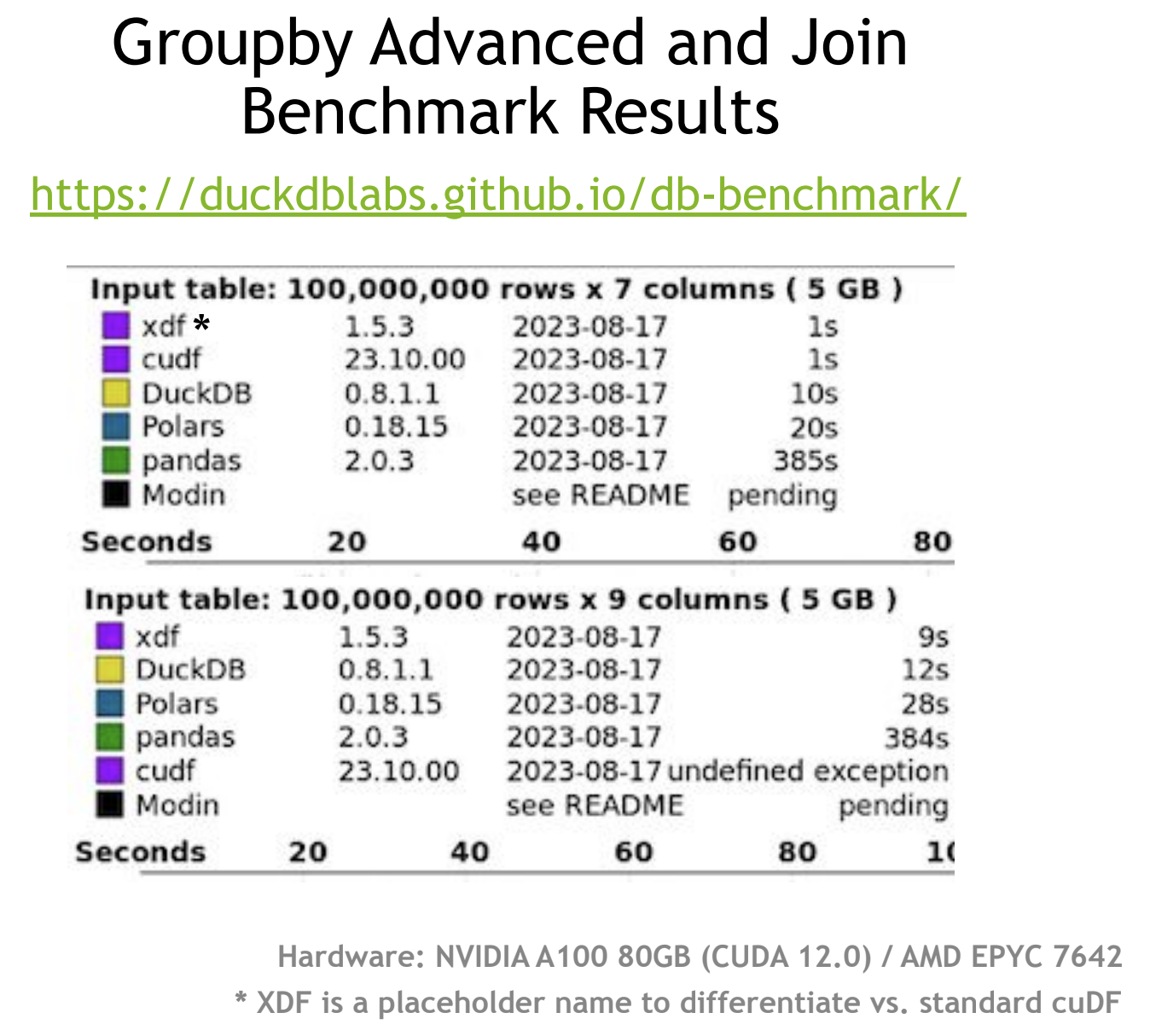course
NVIDIA Announces cuDF pandas Accelerator Mode
Discover how NVIDIA's new cuDF pandas Accelerator Mode can turbocharge your data manipulation tasks in Python. Learn how to get started, the benefits it offers, and how it simplifies high-performance pandas coding.
Nov 7, 2023 · 8 min read
Start Your pandas Journey Today!
4 hr
403.7K
course
Joining Data with pandas
4 hr
159.9K
course
Streamlined Data Ingestion with pandas
4 hr
51.9K
See More
RelatedSee MoreSee More
blog
Getting Started with Polars GPU Acceleration: 13x Faster Queries
Discover how to use the recently released Polars GPU engine, powered by NVIDIA RAPIDS cuDF, to achieve faster query performance on large datasets.
Thalia Barrera
26 min
blog
An Introduction to Pandas AI
Enhance your pandas experience with AI-powered data analysis.
Abid Ali Awan
7 min
blog
Pandas 2.0: What’s New and Top Tips
Dive into pandas 2.0, the latest update of the essential data analysis library, with new features like PyArrow integration, nullable data types, and non-nanosecond datetime resolution for better performance and efficiency.
Moez Ali
9 min
tutorial
High Performance Data Manipulation in Python: pandas 2.0 vs. polars
Discover the main differences between Python’s pandas and polars libraries for data science
Javier Canales Luna
16 min
tutorial
Benchmarking High-Performance pandas Alternatives
Discover the latest benchmarking of Python's powerful pandas alternatives, Polars, Vaex, and Datatable. Discover their performance in data loading, grouping, sorting, and more.
Zoumana Keita
13 min
tutorial
Pandas Tutorial: DataFrames in Python
Explore data analysis with Python. Pandas DataFrames make manipulating your data easy, from selecting or replacing columns and indices to reshaping your data.
Karlijn Willems
20 min





